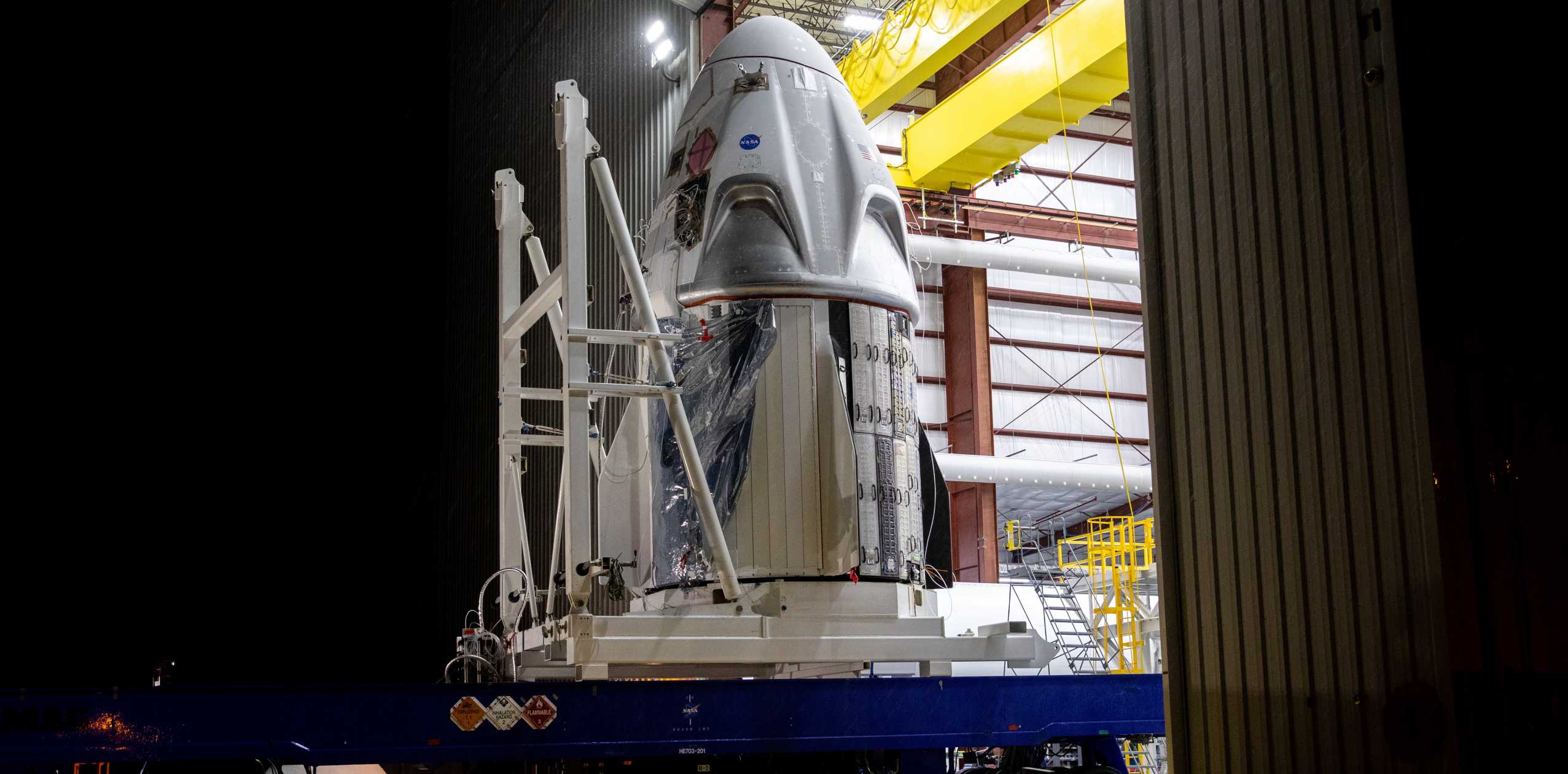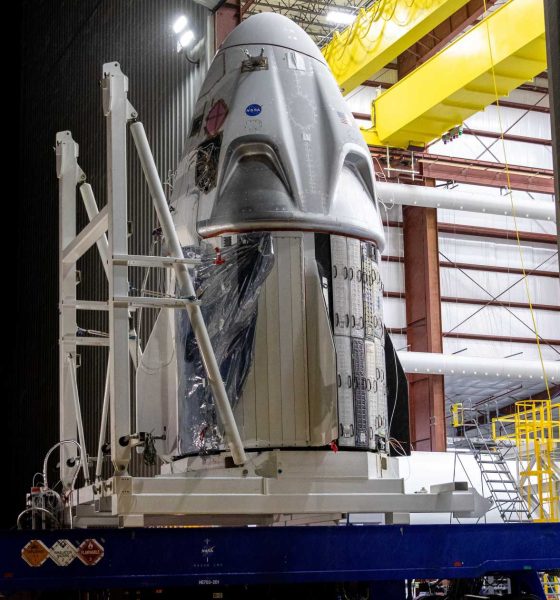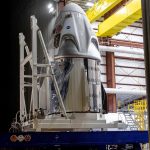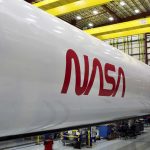

SpaceX
SpaceX Crew Dragon joins Falcon 9 for last mate before astronaut launch debut
NASA and SpaceX are less than two weeks away from the first crewed mission to launch from U.S. soil in nearly a decade. But there’s still work to do before the craft blasts off towards the International Space Station.
On Friday, May 15, the Crew Dragon spacecraft journeyed from a fueling facility at Cape Canaveral’s Air Force Station to launch pad 39A at NASA’s Kennedy Space Center. Tucked inside the SpaceX hangar, the craft will undergo testing and checkouts before being attached to it Falcon 9 launcher in a few days.
The Dragon was filled up with hypergolic fuel (hydrazine and nitrogen tetroxide), which its built-in escape system and onboard thrusters use to maneuver.
Liftoff is scheduled for May 27 at 4:33 p.m. EDT (2033 UTC). At that time, NASA astronauts Bob Behnken and Doug Hurley will rocket towards space, and synch up with the space station less than 24 hours later. During their time on orbit, the duo will put the Crew Dragon’s systems to the test.
Hurley will get to manually pilot the autonomous spacecraft, ensuring the control systems are working as expected. Then the spacecraft will begin the docking process. But before Dragon can attach itself to the space station, it has to be prepped for launch.
- The SpaceX Crew Dragon spacecraft arrives at Launch Complex 39A at NASA’s Kennedy Space Center in Florida, transported from the company’s processing facility at Cape Canaveral Air Force Station on Friday, May 15, 2020, in preparation for the Demo-2 flight test with NASA astronauts Robert Behnken and Douglas Hurley to the International Space Station for NASA’s Commercial Crew Program. Crew Dragon will carry Behnken and Hurley atop a SpaceX Falcon 9 rocket, returning crew launches to the space station from U.S. soil for the first time since the Space Shuttle Program ended in 2011. (NASA – Kim Shiflett, 05/15/20)
- Assigned to support Crew Dragon’s inaugural NASA astronaut launch, Falcon 9 booster B1058 is pictured here at Pad 39A on April 1st, 2020. (SpaceX)
- Crew Dragon C206 was installed on its trunk by May 1st, one month before launch. (SpaceX)
This week, SpaceX crews will inspect the Dragon’s electrical and mechanical attachments before attaching it to the Falcon 9. Using a massive crane, the crew will hoist the Dragon onto the rocket. The duo will then be loaded onto SpaceX’s transporter and make the trek up to the launch pad.
Hurley and Behnken know this pad well. Both astronauts flew their previous missions after launching from this pad. The crew is set to make the trip to Kennedy this week, arriving on May 20. They’ve been in official mission quarantine since May 13, although the duo has quarantined with each other for several weeks now, with minimal contact with other non-essential staff members.
Once the Dragon and Falcon are on the launch pad, SpaceX engineers will take some time to inspect and examine the vehicles before putting the Falcon through some routine pre-launch testing, including a fueling run and a static fire test.
The next major hurdle before launch will be a flight readiness review, which will take place on May 21. If that goes as planned, there will be a final launch readiness review on May 25th. In the meantime, after they arrive at the launch site, Behnken and Hurley will undergo some last-minutes training, make sure their spacesuits are fitting correctly, and do a full launch practice run on Saturday, May 23.
According to NASA, there is still a lot of work to be done ahead of the May 27th launch date, but currently, everything is on schedule. Once on station, Behnken and Hurley will stay up to four months on the orbital outpost before returning to Earth.

Elon Musk
Starlink passes 9 million active customers just weeks after hitting 8 million
The milestone highlights the accelerating growth of Starlink, which has now been adding over 20,000 new users per day.

SpaceX’s Starlink satellite internet service has continued its rapid global expansion, surpassing 9 million active customers just weeks after crossing the 8 million mark.
The milestone highlights the accelerating growth of Starlink, which has now been adding over 20,000 new users per day.
9 million customers
In a post on X, SpaceX stated that Starlink now serves over 9 million active users across 155 countries, territories, and markets. The company reached 8 million customers in early November, meaning it added roughly 1 million subscribers in under seven weeks, or about 21,275 new users on average per day.
“Starlink is connecting more than 9M active customers with high-speed internet across 155 countries, territories, and many other markets,” Starlink wrote in a post on its official X account. SpaceX President Gwynne Shotwell also celebrated the milestone on X. “A huge thank you to all of our customers and congrats to the Starlink team for such an incredible product,” she wrote.
That growth rate reflects both rising demand for broadband in underserved regions and Starlink’s expanding satellite constellation, which now includes more than 9,000 low-Earth-orbit satellites designed to deliver high-speed, low-latency internet worldwide.
Starlink’s momentum
Starlink’s momentum has been building up. SpaceX reported 4.6 million Starlink customers in December 2024, followed by 7 million by August 2025, and 8 million customers in November. Independent data also suggests Starlink usage is rising sharply, with Cloudflare reporting that global web traffic from Starlink users more than doubled in 2025, as noted in an Insider report.
Starlink’s momentum is increasingly tied to SpaceX’s broader financial outlook. Elon Musk has said the satellite network is “by far” the company’s largest revenue driver, and reports suggest SpaceX may be positioning itself for an initial public offering as soon as next year, with valuations estimated as high as $1.5 trillion. Musk has also suggested in the past that Starlink could have its own IPO in the future.
News
SpaceX shades airline for seeking contract with Amazon’s Starlink rival

SpaceX employees, including its CEO Elon Musk, shaded American Airlines on social media this past weekend due to the company’s reported talks with Amazon’s Starlink rival, Leo.
Starlink has been adopted by several airlines, including United Airlines, Qatar Airways, Hawaiian Airlines, WestJet, Air France, airBaltic, and others. It has gained notoriety as an extremely solid, dependable, and reliable option for airline travel, as traditional options frequently cause users to lose connection to the internet.
Many airlines have made the switch, while others continue to mull the options available to them. American Airlines is one of them.
A report from Bloomberg indicates the airline is thinking of going with a Starlink rival owned by Amazon, called Leo. It was previously referred to as Project Kuiper.
American CEO Robert Isom said (via Bloomberg):
“While there’s Starlink, there are other low-Earth-orbit satellite opportunities that we can look at. We’re making sure that American is going to have what our customers need.”
Isom also said American has been in touch with Amazon about installing Leo on its aircraft, but he would not reveal the status of any discussions with the company.
The report caught the attention of Michael Nicolls, the Vice President of Starlink Engineering at SpaceX, who said:
“Only fly on airlines with good connectivity… and only one source of good connectivity at the moment…”
CEO Elon Musk replied to Nicolls by stating that American Airlines risks losing “a lot of customers if their connectivity solution fails.”
American Airlines will lose a lot of customers if their connectivity solution fails
— Elon Musk (@elonmusk) December 14, 2025
There are over 8,000 Starlink satellites in orbit currently, offering internet coverage in over 150 countries and territories globally. SpaceX expands its array of satellites nearly every week with launches from California and Florida, aiming to offer internet access to everyone across the globe.
Currently, the company is focusing on expanding into new markets, such as Africa and Asia.
News
Tesla hints at Starlink integration with recent patent
“By employing polymer blends, some examples enable RF transmission from all the modules to satellites and other communication devices both inside and outside the vehicle.”

Tesla hinted at a potential Starlink internet terminal integration within its vehicles in a recent patent, which describes a vehicle roof assembly with integrated radio frequency (RF) transparency.
The patent, which is Pub. No U.S. 2025/0368267 describes a new vehicle roof that is made of RF-transparent polymer materials, allowing and “facilitating clear communication with external devices and satellites.”
Tesla believes that a new vehicle roof design, comprised of different materials than the standard metallic or glass elements used in cars today, would allow the company to integrate modern vehicular technologies, “particularly those requiring radio frequency transmission and reception.
Tesla has recently filed a US patent application on integrating RF transparent materials into the roof structure.
“facilitating clear communication with external devices and satellites”
Tesla fleet is getting @Starlink connectivity integration soon. LFG @Tesla @elonmusk… pic.twitter.com/bLa8YtPLd1
— Chansoo Byeon (@Chansoo) December 9, 2025
Instead of glass or metallic materials, Tesla says vehicles may benefit from high-strength polymer blends, such as Polycarbonate, Acrylonitrile Butadiene Styrene, or Acrylonitrile Styrene Acrylate.
These materials still provide ideal strength metrics for crashworthiness, stiffness for noise, vibration, and harshness control, and are compliant with head impact regulations.
They would also enable better performance with modern technologies, like internet terminals, which need an uninterrupted signal to satellites for maximum reception. Tesla writes in the patent:
“By employing polymer blends, some examples enable RF transmission from all the modules to satellites and other communication devices both inside and outside the vehicle.”

One of the challenges Tesla seems to be aware of with this type of roof design is the fact that it will still have to enable safety and keep that at the forefront of the design. As you can see in the illustration above, Tesla plans to use four layers to increase safety and rigidity, while also combating noise and vibration.
It notes in the patent that disclosed examples still meet the safety requirements outlined in the Federal Motor Vehicle Safety Standards (FMVSS).
Starlink integrated directly into Tesla vehicles would be a considerable advantage for owners. It would come with a handful of distinct advantages.
Initially, the inclusion of Starlink would completely eliminate cellular dead zones, something that is an issue, especially in rural areas. Starlink would provide connectivity in these remote regions and would ensure uninterrupted service during road trips and off-grid adventures.
It could also be a critical addition for Robotaxi, as it is crucial to have solid and reliable connectivity for remote monitoring and fleet management.
Starlink’s growing constellation, thanks to SpaceX’s routine and frequent launch schedule, will provide secure, stable, and reliable internet connectivity for Tesla vehicles.
Although many owners have already mounted Starlink Mini dishes under their glass roofs for a similar experience, it may be integrated directly into Teslas in the coming years, either as an upgrade or a standard feature.











